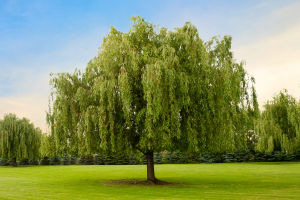Hello, Lykkers! When you admire a blooming flower or a towering tree, it's easy to forget what's going on underground. But just below the surface lies a busy, structured world of roots—systems designed to anchor, nourish, and even rescue the plant when needed.
Roots don't just “hold things in place.” They help the plant drink, store nutrients, and survive tough situations.
In this guide, we're digging deep (pun intended!) into three main types of root systems: taproots, fibrous roots, and adventitious roots. Each has its own purpose and perks, and by the end, you'll know how plants choose their underground tools depending on where and how they live. Whether you're potting a plant or walking through the woods, you'll never look at roots the same way again.
Part 1: Taproots and Fibrous Roots
Let's start with the two main types you're most likely to spot in gardens and nature walks.
Taproots: Going Deep and Strong
Taproots are like the deep-sea divers of the plant world. When a plant grows a taproot, it sends one big central root downward, often very far. Around that thick main root, smaller side roots grow like branches. This type of system is great for digging deep to find water or minerals way below the surface. You've seen it in carrots, dandelions, and many trees.
Now imagine you're a plant in a dry area. You'd want your root to reach water far underground, right? That's the superpower of taproots. They also store extra nutrients to help the plant survive through tough times. Plus, they're great anchors, keeping the plant firm against wind or shifting soil.
Fibrous Roots: Spreading Wide and Fast
Next, take a look at fibrous roots. Instead of one big root, these plants grow lots of thin, thread-like roots that spread out in every direction. Grasses are famous for this, but you'll also see it in wheat, onions, and lilies.
This wide-spreading root system makes fibrous roots great at grabbing nutrients from the top layers of soil. If you've ever seen grass bounce back after being walked on or rained on, thank its fibrous roots. They help prevent soil erosion too by holding the topsoil together. So if you're thinking about growing ground cover or plants that grow quickly and protect the soil, fibrous roots are nature's go-to design.
Part 2: Adventitious Roots and Their Surprising Roles
Let's move into the fun and flexible world of adventitious roots—roots that break the rules and show up where you least expect them!Roots from Unexpected Places
Adventitious roots don't grow from the base of a stem like most roots. Instead, they pop up from stems, leaves, or even old flower stalks. If you've ever put a stem cutting in water and watched little roots appear out of nowhere, you've already seen this magic in action.
These roots help plants when their regular system isn't enough. Think of them as backup plans—helping a fallen branch grow into a new plant or letting a climbing plant grip onto walls and trees. You'll find them in ivy, mangroves, and even corn. In fact, the thick roots you see growing from a corn stalk just above the soil are adventitious roots giving the plant extra support.
Helping in Survival and Propagation
Plants don't always get to stay cozy in one place. Sometimes they get cut, trampled, or blown over. That's where adventitious roots come in handy again. They help plants regenerate, stay upright, or even move across the ground by sprouting from runners or stolen stems. Strawberries are a great example—each runner that touches the soil grows roots and forms a new plant. Nature's way of planting without seeds!
You'll also see these roots helping in flooded areas. In mangroves, for example, they grow up and out of the water, taking in air and stabilizing the tree in shifting muddy ground. So the next time you see a strange root sticking out of a plant stem or reaching into the air, it might just be an adventurer doing important work.
So, Lykkers, now that you've met taproots, fibrous roots, and adventitious roots, you can appreciate how wonderfully adaptable plant life really is. From deep-drilling anchors to shallow soil huggers and unexpected life-savers, root systems are anything but boring. Next time you're in a garden or forest, take a closer look—or better yet, dig a little. You might just find nature's hidden architects hard at work beneath your feet.


